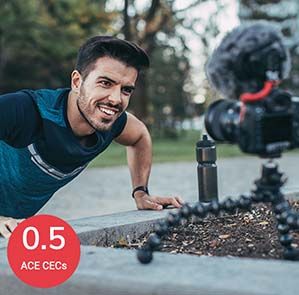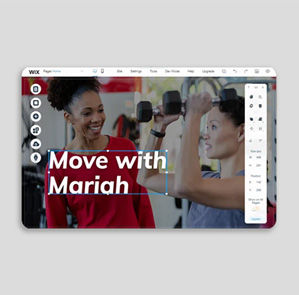
You know you need a website and are ready to get it done, but you’ve got questions—like, what should you include on it? Do you have to invest in a photographer for photos? Do you need a blog? How much is this going to cost?
These are all common questions, and it can feel overwhelming for business owners who want a website but aren’t sure where to begin. Here, we break it down so you can map out what you’ll need on your website to start generating traffic—and, ultimately, income.
The Top Website Must-haves
Building a website is sort of like building a house. You need to have a foundation—the must-haves that will support and guide visitors to your site to the pages they want to go to—keeping in mind that your goal is to get new customers or clients.
“A great website marries the art of design and the science of programming with the heart and soul of a company’s purpose,” says Wil Thomas, lead web programmer and designer for Web Marketing Therapy, Inc. “On a website, an easy, effortless user experience is essential. Upon a website visit, users are more likely to scan—in a matter of seconds—before they drill in and read in depth.”
For this reason, making a good first impression is imperative. Thomas says that the foundational bricks that every website must have include:
- Home: The home page is your introduction—the front door that opens and leads the viewer to the rest of your business.
- About: This information, which may be on your home page and/or on its own separate page, tells your story—what you do, who you are, what your credentials are, awards and honors you’ve received, etc.
- Services or Work With Me: This page makes clear how you can help potential clients and why they should work with you.
- Contact: Include all the ways people can contact you. You could also include a short form they can fill out and submit.
- Privacy Policy/Terms of Service: This is where you tell people that you will not sell their information, if your site uses cookies, how you use visitors’ information, a disclaimer if your site links to other sites, etc.
- Social Media Icons: Let people know where they can find and follow you on socials.
Thomas notes that a blog can also be an important tool, especially for search engine optimization (SEO).
Tabs for home, about, services, contact and your blog should all live at the top of your home page in a navigation bar, which makes those pages easily accessible. If you’re selling products in addition to your services, that tab can also go on the home page navigation bar. You might also consider adding a footer at the bottom of your home page that includes social media icons, a link to privacy terms and conditions, another link to your blog and a short “About” blurb with a link to learn more.
Kishan Dhanak, director of development for Design Facility in London, adds that he likes to see customer and client testimonials or reviews, which are a great way to start building trust with new visitors to your site. Depending on your business, you could also build an FAQs page with answers to frequently asked questions that can further clarify your services and policies for both clients and potential clients.
Designing Your Site
Building your website is about more than just including certain pages on it. “[It should be] a comfortable and attractive design that has clear navigation, a personality and a tone that reflects your brand and relates to your business and prospective customers,” says Dhanak.
Your brand is more than just a business. Your business includes your products and services. Your brand gives your business a personality and a voice. It’s important to know whom you’re serving—who your ideal clients are—and build your brand around them. Part of branding includes the colors and images you use, as well as your logo.
“And never underestimate the power of great photos or graphics,” says Thomas. “If you want your website to impress, invest in quality images.”
Dhanak points out that you can purchase high-quality stock photos at a reasonable price. Doing a quick Google search using the keywords “stock photos” will bring up several options.
And as with many other things in life, keeping your site simple and to the point works. “Be mindful that so much more website traffic is coming from phones, so a ‘less is more’ approach to what is on the page will enhance user experience,” explains Thomas. “Your content on website pages must immediately and clearly communicate who you are, what you do and whom you serve.”
Thomas also recommends setting up your website with calls-to-action that include clear navigation and defined buttons—like “Learn More” and “Contact Us”—with links.
If you are ready to start building your own website, ACE and Wix have partnered together to simplify the process for you with ready-to-use templates, a built-in suite of digital tools and exclusive career guidance through ACE ProCompass.
Any content you put on your site should be ADA-compliant and exhibit EEAT—expertise, experience, authoritativeness and trust. In other words, be careful about making exaggerated or unproven claims about the products you sell or the services you offer. Your website can be used to build trust with potential clients and customers—or destroy it.
But even the most simple, beautiful, service-oriented website will not be able to help the people you want to serve if you don’t draw traffic to it. To do this, your site needs to rank higher in search engine results.
When you search for something online, you put what you’re searching for—the keywords—into the search bar. Google and other search engines will bring up the sites that most closely match those keywords. There are several ways to work your way up closer to the top of the search results, including having a fast-loading home page and SEO.
“When a website is visited, it must load quickly,” says Thomas. “This is not just to spare visitors having to wait. To have a website come up in the search engine results page, or SERP, site speed is a major factor.”
SEO Crash Course
Another major factor that affects how high on the SERP you land is the use of SEO language on your site.
“A website without SEO is like a shop without windows,” says Dhanak. “It’s a lot harder to see what’s inside and whether the product or content is relevant to what you’re looking for. With all the websites in the world, you need to give search engines a reason to present yours above the rest.”
Erica Julson, RD, aka The Unconventional RD, a digital marketing expert for health and wellness professionals, agrees and feels that content on your site is a must. “If you are not publishing SEO-optimized content on your website, you are leaving money on the table!” exclaims Julson.
Creating content for your site also helps reduce the need to pay for ads or spend all day on social media. “And even if you don’t love writing, I still recommend learning about SEO so that you can strategically outsource these tasks instead,” says Julson.
Julson also notes that website content is more likely to be evergreen; meaning, the information is good for years to come. “This is in stark comparison to social media, which requires users to create fresh content and engage on the platform constantly to boost visibility,” explains Julson.
Once you have regular visitors to your site, you can then invite them to join your email list to deepen your connection to them, says Julson, including presenting paid offers. “And when you have an audience, an email list and an offer, you can then create systems to sell your offer on autopilot so that you can earn money consistently, without having to work 24/7. But it all starts with building your audience, and SEO is an amazing way to do that.”
Here are Julson’s top three tips to incorporate more SEO-rich language into your website:
1. Get clear on your niche. “Pick one topic you want to become a niche expert in, rather than trying to cover 10 topics at once. You can always expand later but start narrow for the best results.”
2. Set up tracking tools. “All website owners should set up Google Analytics and Google Search Console. These are free products from Google that will show you exactly how people are getting to your website, what they do on your site once they’re there, and what phrases people are typing into Google to find you.”
3. Learn keyword research. “Keyword research is the process of figuring out what topics people in your niche are Googling every month so you can create content that matches their specific searches. You can use a keyword research tool, like Keysearch, to figure out how many times people search for different keywords each month, as well as how difficult it might be to get your content to the top of the search results for each keyword.”
Build Your Website
Whether you hire someone to build it or build it yourself, there will be some cost to getting your website up and running. “A website is not something you spend money on,” says Thomas, “it’s a scalable investment.”
Thomas says you can always start small and expand, just make sure you start with a solid foundation that includes best practices. “And never sacrifice things like SEO and design control. There is no right or wrong way approach, just pros and cons,” concludes Thomas.
Expand Your Knowledge
Whether you work independently or for someone else, having your own website as a health and fitness professional is essential. ACE has teamed up with Wix to provide you with ready-to-use templates, a built-in suite of digital tools, and exclusive career guidance through ACE® Pro Compass, so that you can reach more people and grow your health and fitness business like never before.

With social media, wearable tech and on-demand fitness continuing to innovate the health and fitness industry, it’s important that you embrace digital to remain relevant and stay connected with clients. The Transforming Your Digital Business Strategy course bundle gives you the strategies you need to grow your business online and use fitness technology trends to your advantage. Courses include Social Media Marketing Essentials, Effective Business Strategies for Online Exercise Professionals, and Adapting Your Services to the Fitness Technology Revolution.





 by
by 




